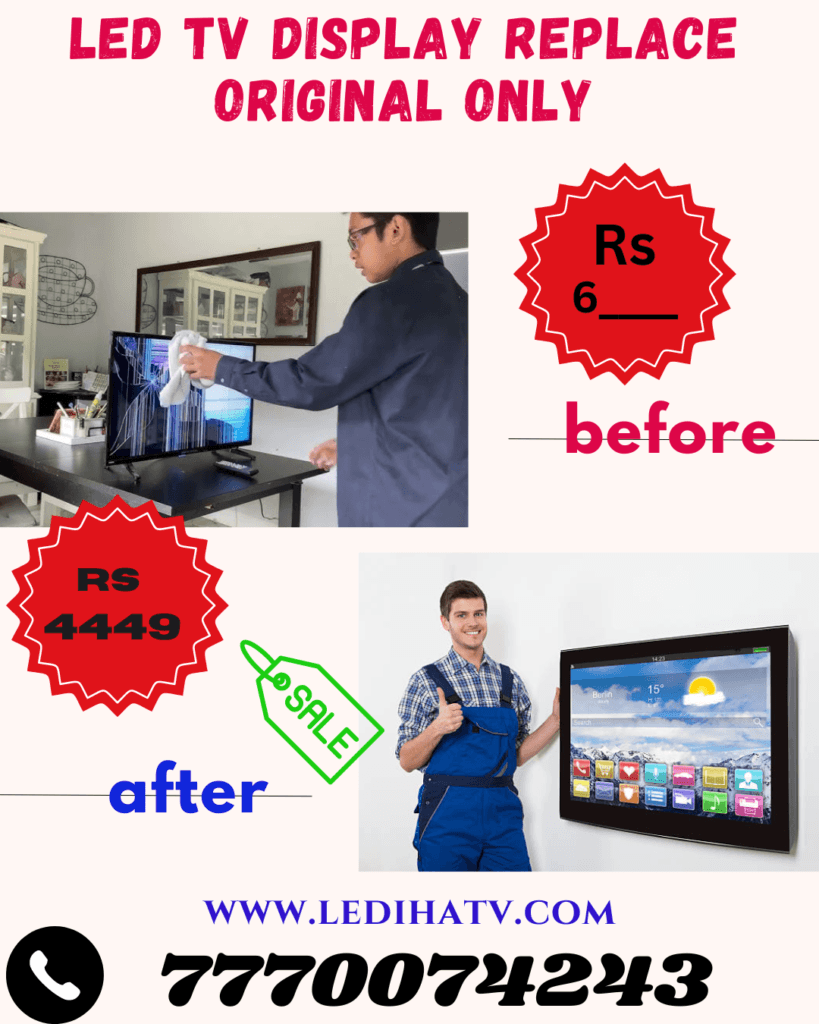Tv Backlight Fixing Near Me
That is more cost-effective: purchasing a new Smart TV or fixing one which backlight Defective? The cost of tv fixing near me a Smart TV’s damaged backlight can vary depending on the model and quantity of damage. In general, fixing a Smart TV’s backlight issues can be costly, especially when the gadget is no more under warranty. Purchasing a new set might be a cheaper option, particularly when the cost of maintenance is close to or better than the cost of a new TV.Repairing the Smart TV may be a better option if the cost is more in the lower range or if it’s simple to do like replacing a fuse. Still, buying a new set might be simpler if the repairs are more difficult or if they are closer to the expensive end of the range, such as replacing the powerboard.The choice to replace or repair a Smart TV tv fixing near me with a backlight problem ultimately comes down to the details, including the TV’s age, cost of repairs, and personal preferences. Asking guidance from a reputable TV repair company can be important when estimating the exact price of repairs and comparing them to the purchase of a new televisions. Updates in Backlighting LED TVs: Backlighting via HDR (High Dynamic Range):LED TVs with support for HDR feature improved backlighting systems that can produce a greater variety of brightness levels. This makes for a more lifelike viewing experience by enabling more vivid colours, more contrast, and greater highlights and shadow simulation. The technology of quantum dots:The method of applying a layer of quantum dots between the LCD screen and the LED backlight is known as quantum dot technology, or QLED (Quantum Dot LED) marketing. A greater range of colours and better colour accuracy can be achieved by carefully modifying the colours that the backlight emits thanks to these nanocrystals. Backlighting with Micro- and Mini-LEDs:The upcoming advancement in LED backlighting is shown by mini-LED and micro-LED technologies. Manufacturers are able to fit more LEDs into the backlight array by making individual LEDs smaller, which enhances local dimming performance, boosts peak brightness, and promotes energy efficiency. What does a TV’s LED backlight suggest? LED TVs are a category of LCD televisions that replace the cold cathode fluorescent lights (CCFLs) used in typical LCD televisions with light-emitting diodes (LEDs) to backlight the display area. Formally speaking, LED TVs are called LED-backlight LCD televisions. Are backlit LEDs more effective? Any of them you select will depend on what you require. Edge-lit LED displays can be a better choice if you value energy economy and a thin, light design. However, backlit LED screens can be a better option if consistent illumination and high brightness levels are your top concerns. What amount does a TV’s backlight cost? The average cost of changing a Led TV backlight is between 800 to Rs1200, depending on the size and scale of the screen as well as the kind and quantity of lights required. The cost of parts may be higher if you use LED lighting, and could increase your total costs. Tv Backlight Fixing Near Me- When your TV’s backlight fails, it can be very annoying to have a completely or partially dark screen. However, you may avoid this headache by locating a trustworthy repair business in the area. With the help of this guide, you can find a trustworthy TV backlight repair service in your area and get your entertainment centre back to looking great in no time. Local Electronic Repair Shops: Search nearby electronic service providers in the area to start your search. These companies generally specialised in fixing multiple gadgets, including Led TVs. Search online directories, social media sites, or online stores to find local repair companies that have a reputation for Led tv fixing near me and good customer feedback. Ideas for popular opinion Promotion:Speak with relatives, close friends, and neighbours who have experienced comparable TV problems. You can find reliable repair firms that have successfully repaired Led TV backlights for customers you trust by following personal recommendations. Enquire about the turnaround time, service quality, and their experiences. Online forums and Community Groups: It can be very useful to get involved with online forums and community groups that are dedicated to electronics or appliance repair. Post inquiries on local TV backlight repair services, tv fixing near me and other members may be able suggest some options based on their personal experience. Prior to choosing a repair business, make sure you conduct independent research on recommended repair shops. Online Service Marketplaces: Look into online marketplaces that link consumers with nearby service providers. You can look for tv fixing near me experts nearby on websites like Osea Tech ,Ledihatv, or Omkar Services ‘s List. Read reviews, compare prices, and get in contact with service providers directly to gauge their level of backlight solving issues expertise. In conclusion, you must find a reliable local repair business in order to get your tv fixing near me backlight working at its best again. By the use of the internet, recommendations, and local resources, you may find qualified specialists who can identify your issue and resolve it quickly. When choosing a repair provider, put reliability, experience, and client happiness first to guarantee an easy task and a revitalised viewing experience.

